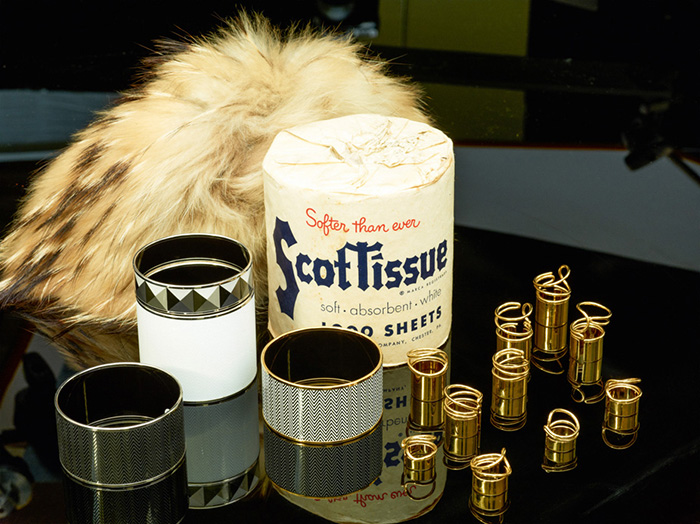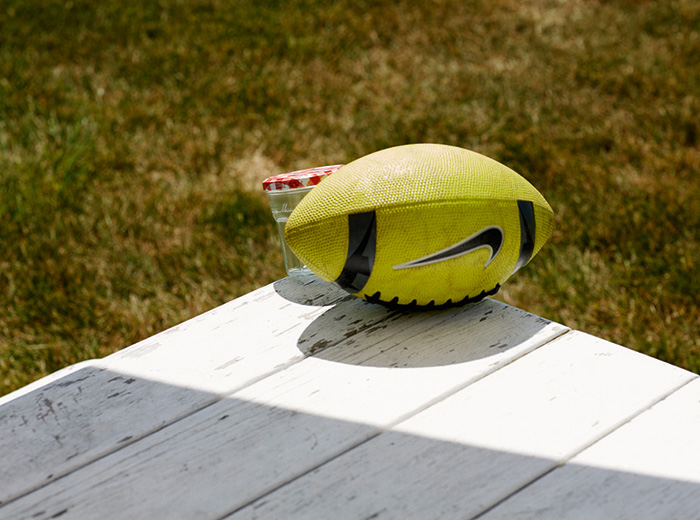Between Affect and Apathy: Roe Ethridge’s Sacrifice Your Body
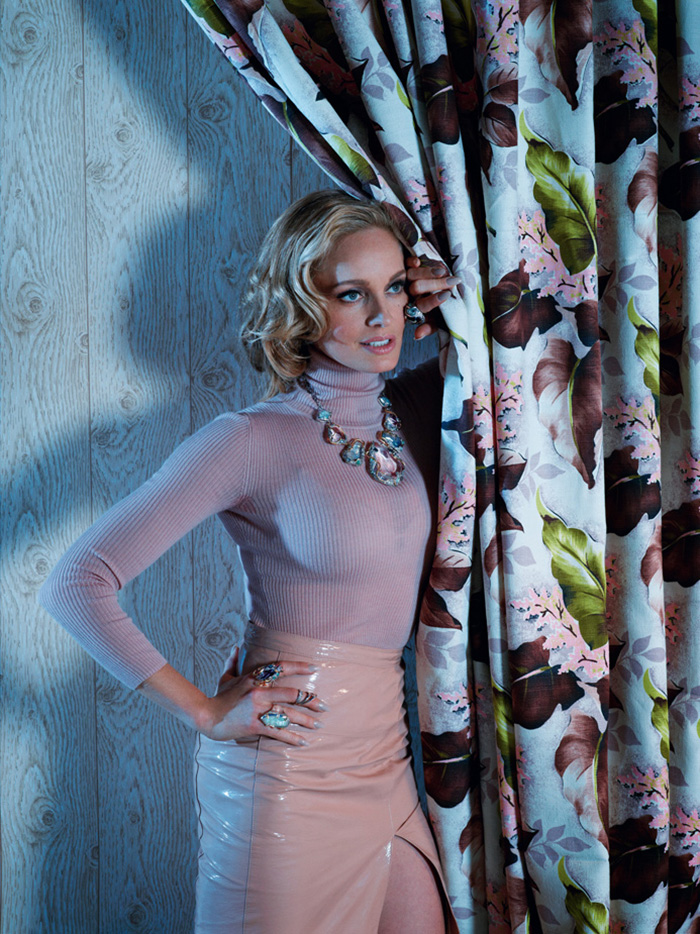
Sacrifice Your Body begins like a magazine with a Chanel ‘ad’, before pivoting into a kind of faux film noir, and then on against its grain through a series of diaristic ephemera that yoke together in dissonant absurdity the landscapes of central Florida, and downtown Paris. The book closes with an autobiographical statement (uncharacteristic in Ethrdige’s books) which details the short-life of a rented ‘teeth-white’ Dodge Durango, whose demise is charted here and there across the length of the photographic sequence. Autobiography thus plays a central role in reconciling the apparent dissonance of this work. In it, we are guided in juddering fashion through the workplace of the artist (the commercial studio), the hometown of his mother (Belle Glade, FL), and the whistle-stop metropolitan itinerary of a successful fashion photographer.
Out of this incongruent array of landscapes, a sequence of irreverent and sardonic photographs seeks to make art from the conjunction of personal and professional life. The artist’s familial relation to Florida, his skilled production of luxury advertisements, and his fascination with television and cinema together form a sort of symbolic ground for this peripatetic book. Its title, when read against the overtly pubescent tenor of many of the images, recalls the type of exhortation an adolescent might suffer in public from his parents in the midst of a game of football. We are thus given to understand that this work is personal, and that it engages the artist’s ‘relationship with his mother’.
However, the overt stress on this work’s autobiographical form ultimately reveals its non-commital nature, and underscores its lack of critical energy. Framed as a loose exploration of self, work and family history, every image nevertheless converges in a uniformly weightless tone. Irony is born of contrast, and its critical energy derives from the absurdity of using an inverted form to point more directly at a specific and intended subject. In Sacrifice Your Body, however, each image conforms to a single logic in which the improbable and the inconsequential stand as the widest possible extremes of a profoundly narrow experience. There is little, if any, contrast between the gentrified and picturesque Belle Glade, and Ethridge’s reworking of Hitchcock’s well-heeled and murderous women. In both, theatricality stands as a substitute for any semblance of plausible human emotion, and irony serves as a means to distract rather than invite attention.
Typically in those photographs that parody the form of commercial imagery, some subtle and yet legible deformation is performed on the smoothness of conventional style. Collaging is ‘imperfectly’ disguised between figure and backdrop, the digital stitching-together of images is stressed rather than masked, the apparatus of display are foregrounded, accident is invited into the polished arena of the commercial studio space. These imperfections represent a deliberate slippage against commercial conventions, but they simultaneously delight in the production of desire – suggesting together that desire may be banal but nevertheless inescapable.
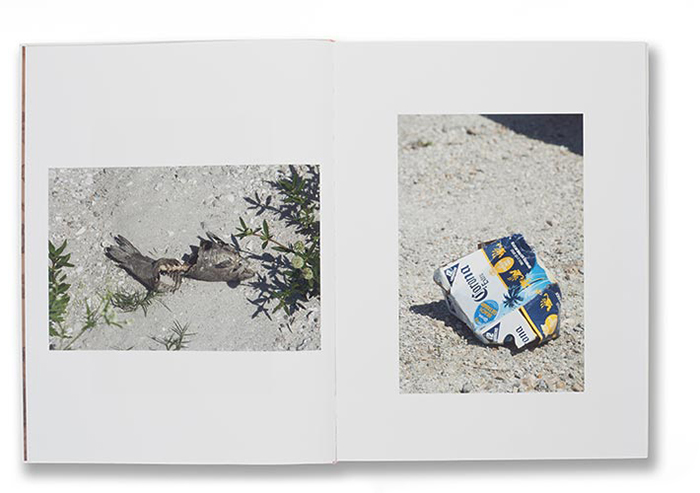
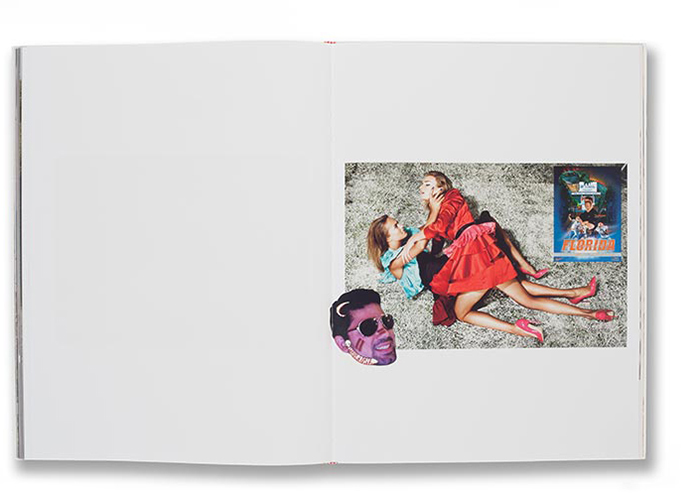
(spreads courtesy of MACK)
The book is intensely object-driven, in the sense of possessing an unwavering fascination with the surface of commercial goods. However, even as the photographs continually evoke the question of desire, their stress on the alternating extremes of pastiche and banality suggest that we are united in our envy or otherwise by irony alone.
In both Rockaway, NY and Le Luxe, Ethridge found a means to both embody and satirise the soft-spots of the gentrified bourgeoisie. His incorporation of absurd self-portraits seemed a tacit acceptance of his implication in the subject matter of his work. He has cited the work of Michael Schmidt (most specifically U-Ni-ty) as an early and profound influence on his vision, and we might well recall Schmidt’s own willingness to similarly incorporate himself into the fabric of his own incisive work.
The portraiture in U-Ni-ty engaged the diffuse and complex psychological weight of German history, and in a distinct yet complementary fashion numerous portraits in Rockaway, NY and Le Luxe overturned the authority of the image in modern culture. Ethridge’s delight in the plasticity of photographic form was counterbalanced, in those works, by a willingness to interrogate the privilege that gave the artist his freedom. In this work difference is neutralised by the pervasiveness of fantasy. Chanel is ennobled by the bee that besmirches its image, just as the celebrity Giselle is ennobled by being framed as a film noir starlet. The still lifes that mirror conventional vanitas from the history of painting do not portend the inevitability of death, so much as the ignominy of uselessness. In contrast to Hans Haacke’s iconoclastic subversion of the structure of commercial language, here the photograph subject commerce to a parody in which it willingly participates. This preserves a nominal distance between the luxury jeweller and the rim shop, while simultaneously negating any notion of substantive difference.
Everything is surface in this pictorial autobiography, and despite its undeniable flair and technical eloquence, it asks relatively little of us as viewers. In 1985, Douglas Crimp wrote that “[a]ppropriation, pastiche, quotation – these methods extend to virtually every aspect of our culture, from the most cynically calculated products of the fashion and entertainment industries to the most committed critical activities of artists.” It seems to me that these images are premised on our capacity to detect and to delight in irony, or in aesthetic terms to delight in the reigning gesture of formal distortion. However, the satirical energy of these images reconfirms the power of their objects, rather than working them over into a point of crisis or absurdity. At best this might imply that in the realm of autobiography, memory is always rose-tinted. At worst this neutrality disguises a glibness that can offer us little substance.
